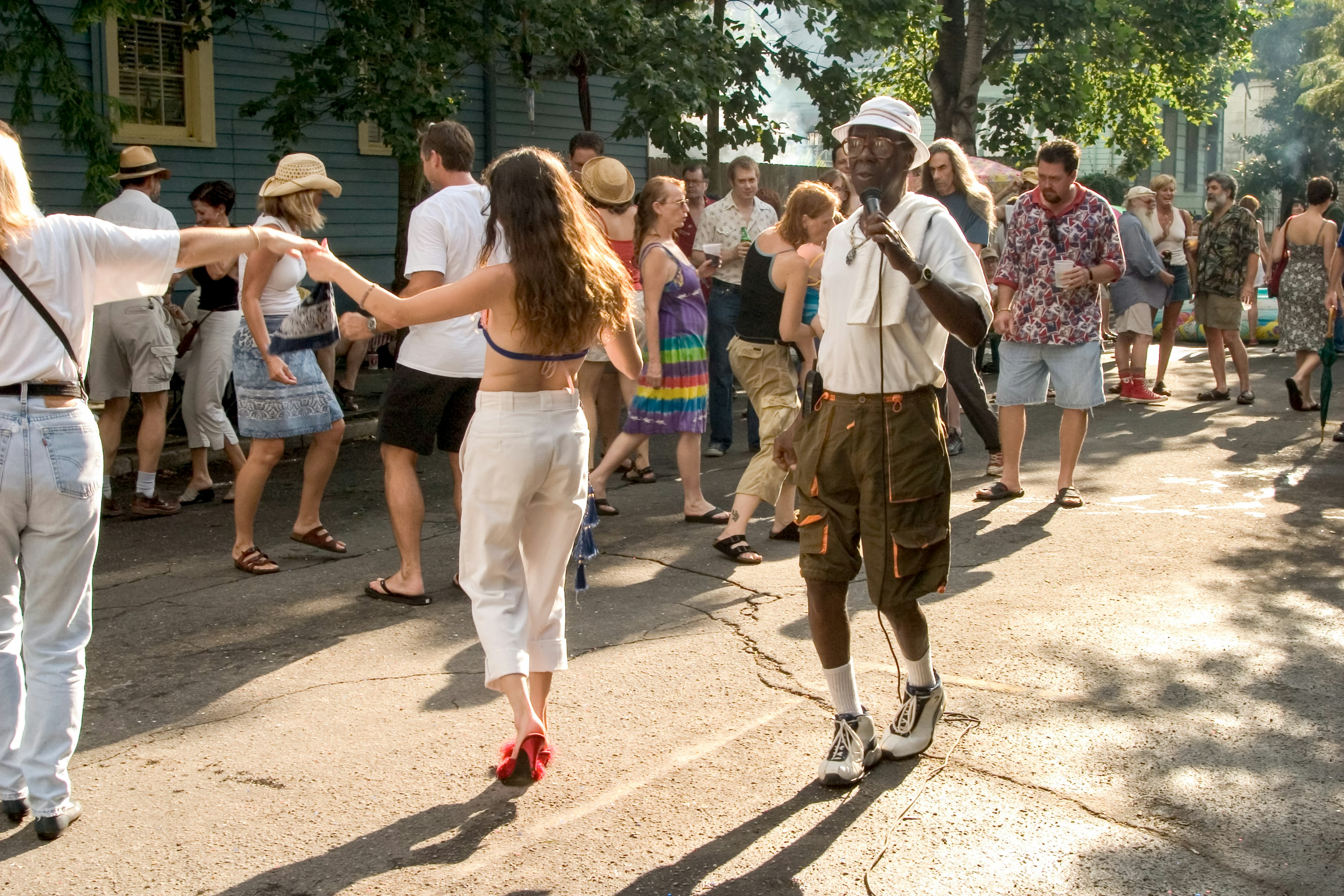In a New Orleans neighborhood popular with tourists, a familiar question is bubbling up to the surface: what responsibility do tourists have to the communities they visit?
It’s 6:30am on a Monday and I’m in the back of an Uber driving through the Bywater neighborhood of New Orleans on my way to the airport.
The windows are down, letting in a springtime breeze, the sweet fragrance of jasmine vines and the shrill caw of a nearby rooster. The sunlight glistens on long, slim, Creole-style “shotgun homes” painted in multiple shades of green, orange, yellow, blue, purple and red.
I bought my own Bywater home a decade ago and on this perfect morning, I’m very happy with my purchase. My Uber driver, a 50-something-year-old Black man, is having a different thought.
“Look at this,” he says, under his breath. We’re waiting at a stoplight, across the street from a group of 10 young women – all white like me – loading their suitcases into the trunks of multiple cars. Anyone who lives in the neighborhood nowadays recognizes this increasingly common site: a girls’ trip heading home after a memorable (or, as is often the case, blurry) weekend in town.
“You’re not used to seeing tourists down here?” I ask, but I know the answer. Ten years ago, it was rare. A generation ago it was unheard of.
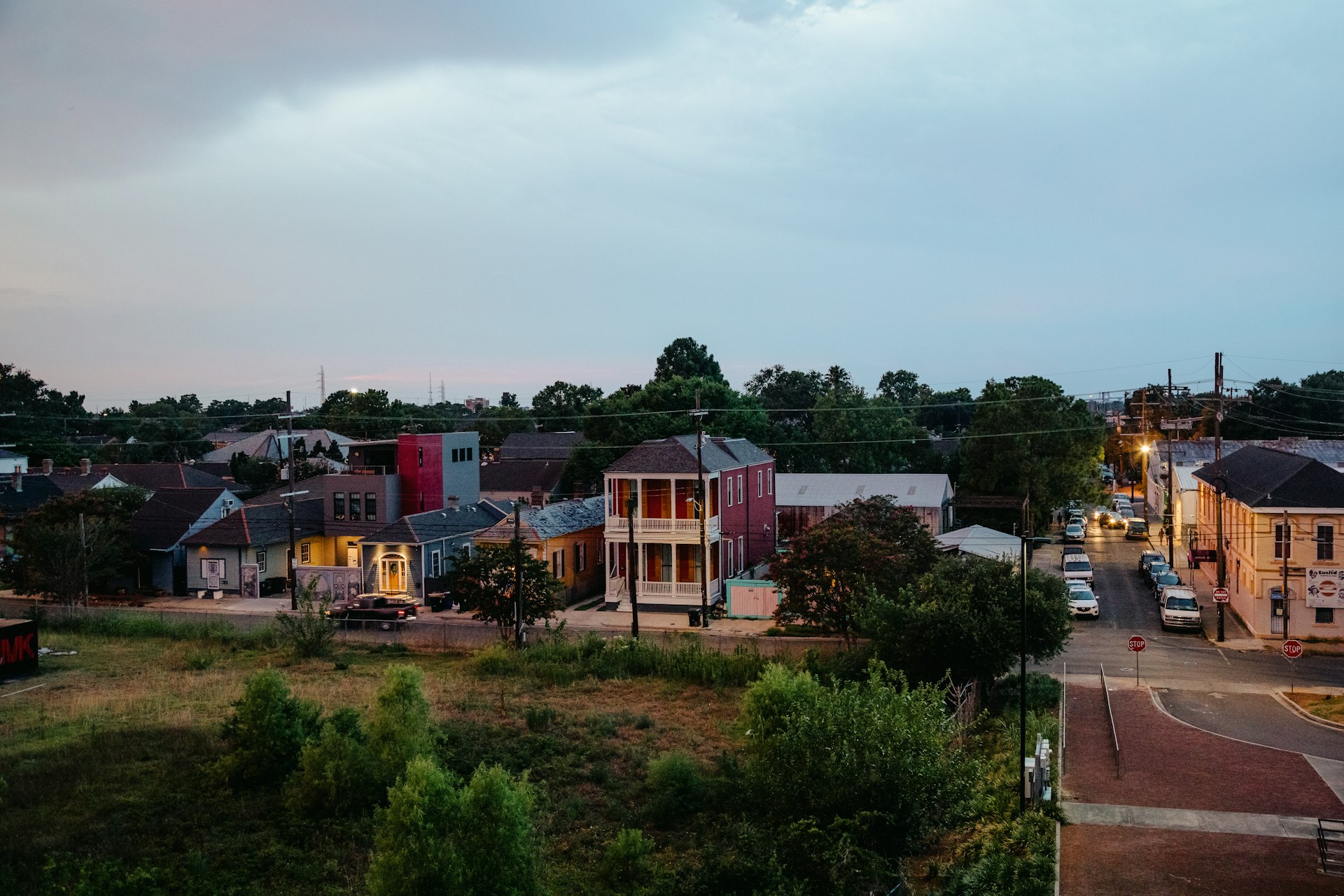
“My momma used to tell us it was too dangerous to go to the Ninth Ward,” he says, laughing and using the name longtime locals still call the Bywater and much that surrounds it. “I never thought I’d live to see the day we’ve got bachelorette parties down here. City’s changing.”
I notice he doesn’t specify whether it’s for the better or for the worse.
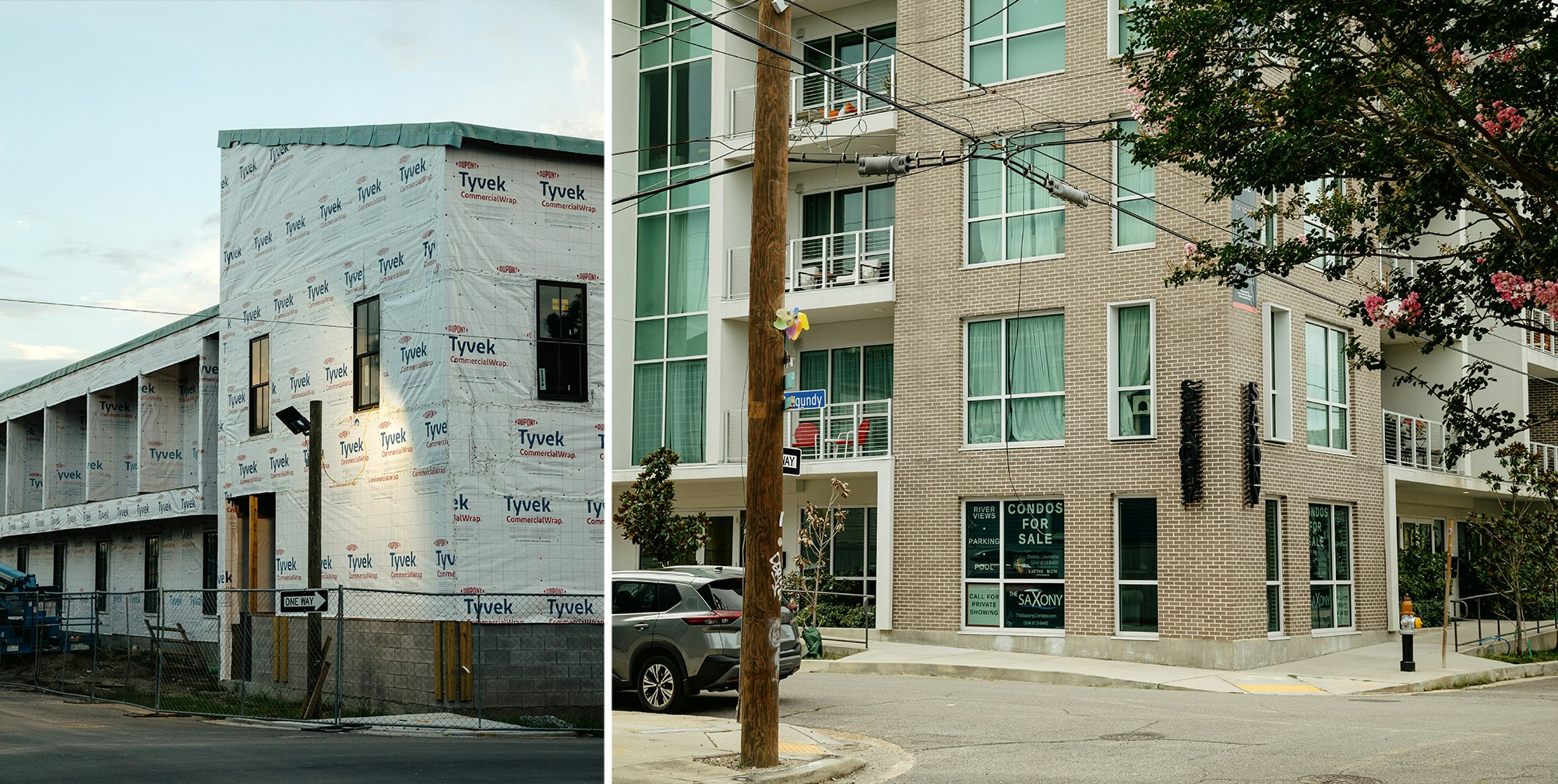
Gutting the city
Of course, it’s not just New Orleans that’s transforming – it's cities around the world. While research shows tourism plays an important role, much of the change we’re seeing in historic neighborhoods like the Bywater can’t be placed on tourists’ shoulders alone. Affluent residents are moving into city centers en masse for the first time in generations.
The Bywater's newest residents have painted their freshly renovated homes in bright, Instagram-friendly colors, advocated for and won an expansive riverfront park, and created or attracted businesses that would have been unimaginable along the neighborhood's commercial corridors a generation ago. St. Claude Avenue, for example, features everything from a small batch jam company to an art market. I frequent many of these businesses and I run in the park every day, but new amenities and attractions like these are collectively pushing up rent and pushing out poor and working-class Black families.
Many of those families had been in the neighborhood since the middle of the last century, moving in as the white middle class fled for the suburbs, depleting a tax base that over the decades would incapacitate or destroy schools, roads, the police force, the housing stock and shutter countless businesses.
“The Ninth Ward was a scarier place back then,” explained Alton Osborn, who was born in New Orleans before moving away with his family only to return as a young adult in the late 1990s. “I’m a big man, and even I was nervous to bike around after dark.”
Top 10 city parks in New Orleans
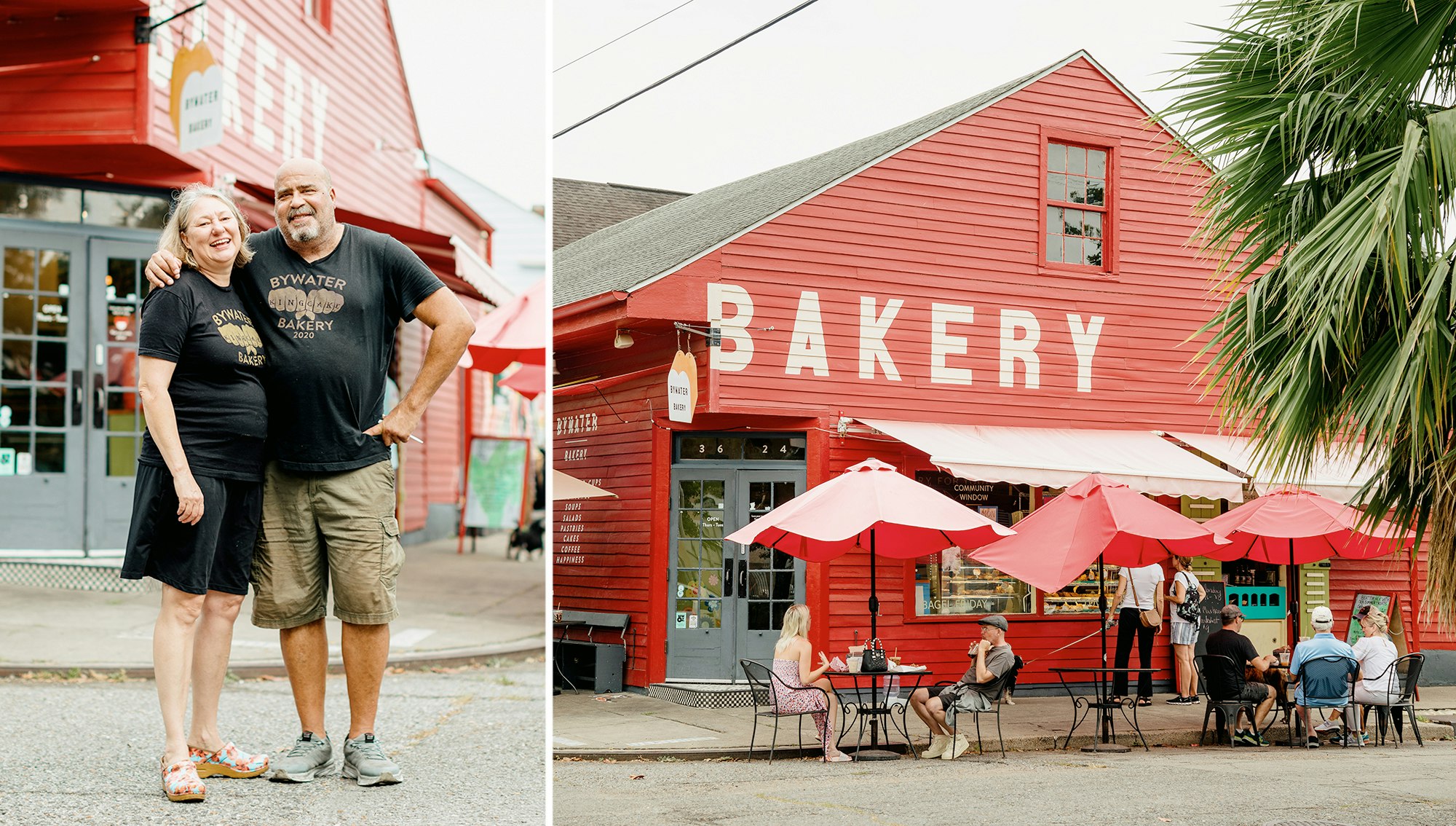
Osborn was a fashion designer when he bought a home in the community. Today, he co-owns the Bywater Bakery, where you’ll find neighbors congregating every morning around the takeout window. On more leisurely afternoons, locals sit with their coffees and pastries at tables shielded by deep-red umbrellas matching the building’s unmistakable coat of paint. The bakery is one of the only Black-owned businesses in a census tract where, at the turn of the century, three of four residents were Black.
“A lot of houses were blighted back then, but you could buy them for really cheap,” Osborn said. This brought musicians and “artist-types” (as Osborn calls them) into the neighborhood, looking for an affordable place to live. They joined Black families, many who had been there for decades.
“There weren’t a lot of businesses in the neighborhood and barely any restaurants. I don’t think the neighborhood could have supported Bywater Bakery back then,” Osborn said. “But you knew your neighbors and people said hi to each other and talked on each other’s porches, sometimes for hours. They respected each other and that part was nice.”
Revitalization or gentrification?
That community feel which once made the Bywater so attractive is proving difficult to maintain these days. Among other factors was the devastation of Hurricane Katrina. The 2005 storm damaged or destroyed hundreds of thousands of New Orleans-area homes. This drop in the housing supply further drove up the price of rent.
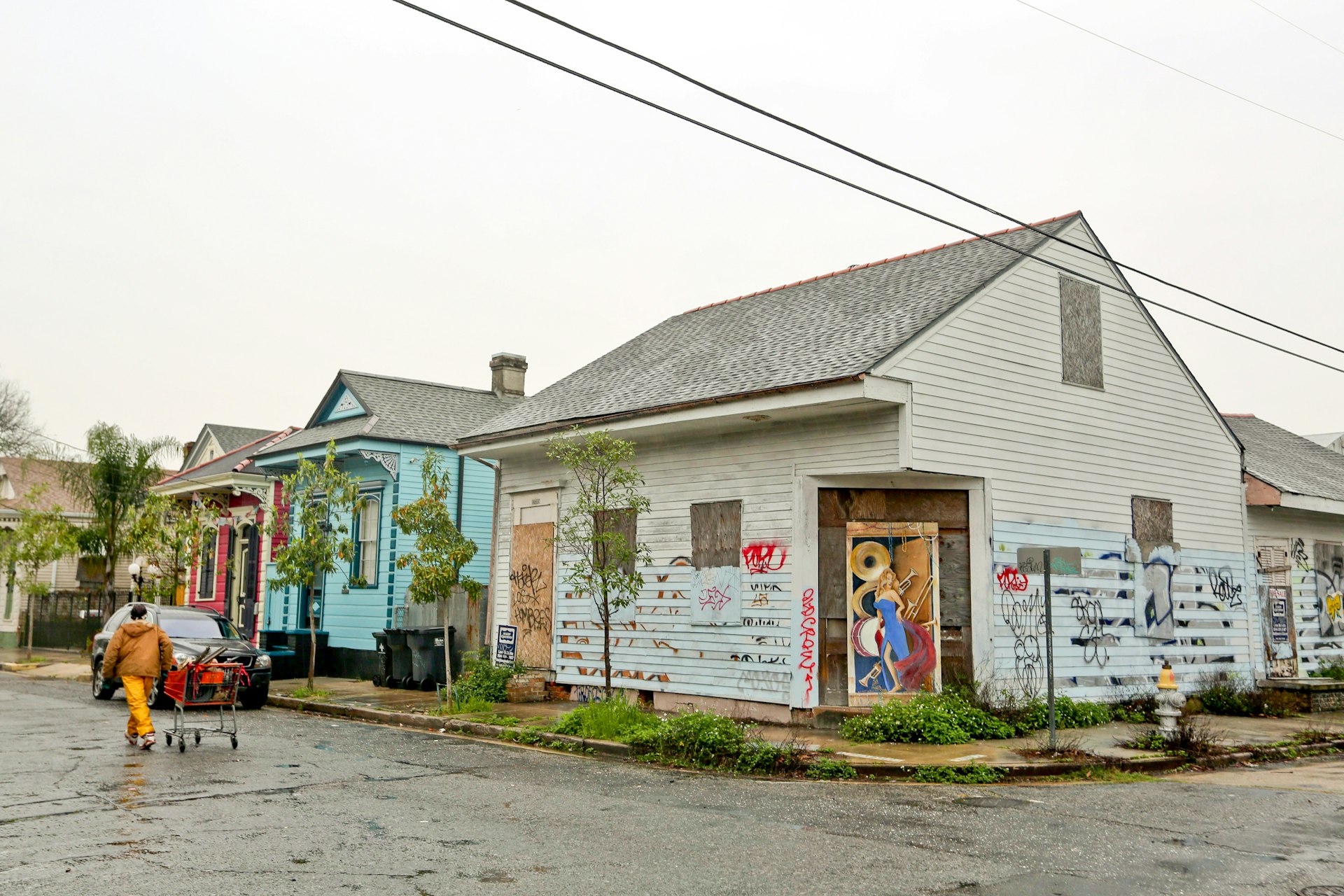
Young professionals from around the country (myself – a New Yorker – included) came to the city to help rebuild through programs like AmeriCorps. We fell in love with the uniqueness and relative affordability of the city, purchased homes in neighborhoods where they were inexpensive, and renovated those homes. The Bywater was a primary destination for us newcomers and within a couple of years new restaurants, bars and other businesses popped up to serve the changing demographic.
If you have a more positive view of these changes, you might refer to them collectively as “revitalization.” If not, you likely prefer the more sober-sounding “gentrification.” Either way, the effects are undeniable.
In the decade-plus since, residents have converted many of the neighborhood’s famous “shotgun double” duplexes into more spacious single-family homes. With the onset of short-term rental opportunities such as Airbnbs, hundreds of the remaining units in the neighborhood have been used by landlords to house tourists willing to pay more than local tenants can afford. My block on France Street has so far managed to avoid the worst of the short-term rental scourge, but not completely. On most Friday evenings, if I’m sitting on my porch, I can see a new cast of vacationers arriving at the orange home catty-corner to my own.
The best time to visit New Orleans
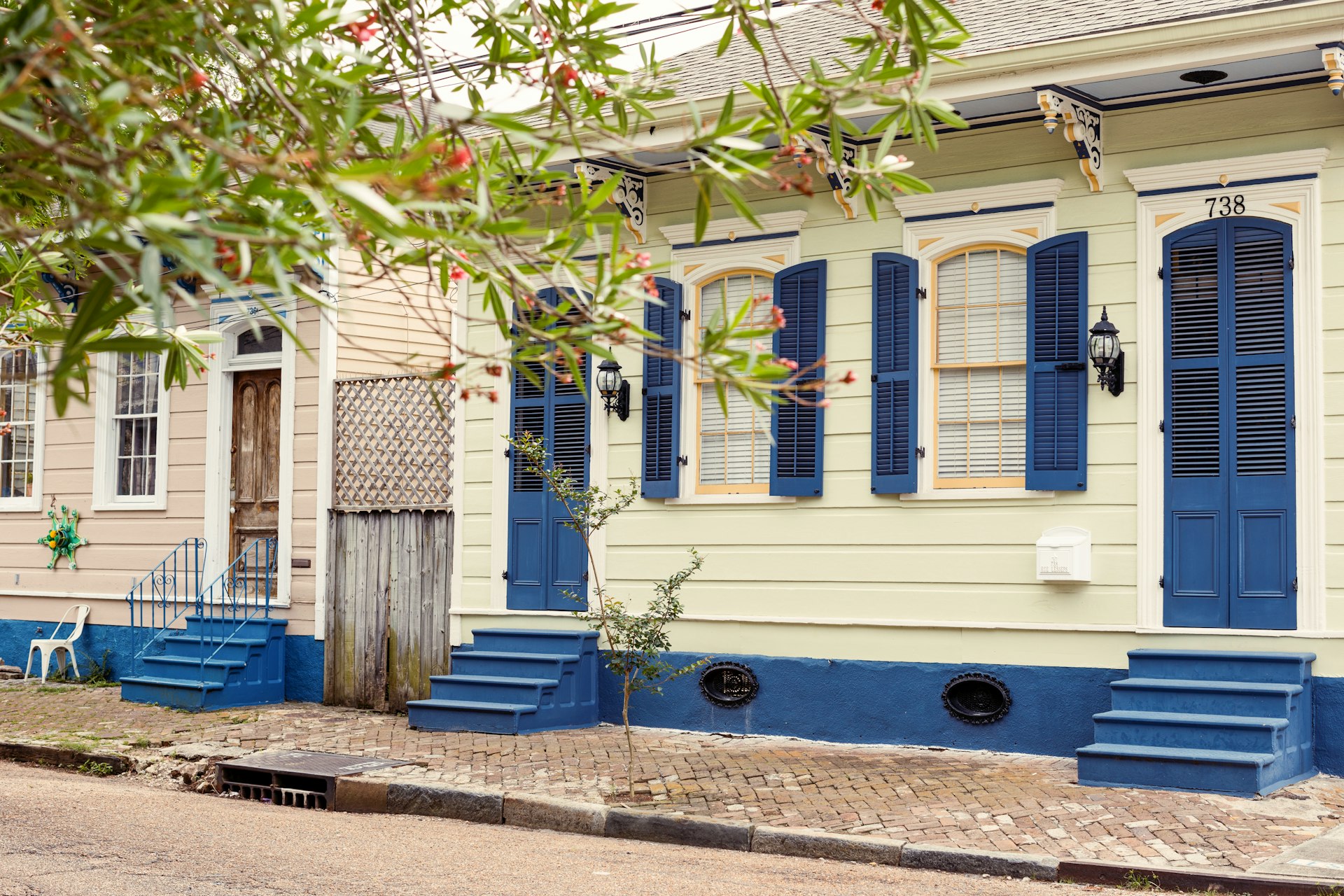
Altogether this has had the combined effect of further shrinking the number of homes available for locals to rent, and driving up rental costs for any remaining units.
“Thousands of New Orleanians have been and continue to be pushed out of the neighborhood – many of them people of color,” said Maxwell Ciardullo, Director of Policy and Communications at the Louisiana Fair Housing Action Center. “What was, in the year 2000, a census tract made up of 74% Black residents only had 37% in 2020.”
“You have entire blocks now that are taken over by Airbnb,” Osborne said. “It used to be neighbors hanging out on their porch. Now some streets feel like a ghost town.”
But, if you visit Bywater Bakery, you can still see signs of what makes the neighborhood special.
The red corner home-turned-business feels as much a community center as it does a bakery. Osborn and his wife and business partner Chaya Conrad live just down the street as do many of their employees. The work of neighborhood artists adorn the walls, and neighborhood musicians can often be found playing outside, entertaining loyal regulars as well as curious tourists.
20 free things to do in New Orleans
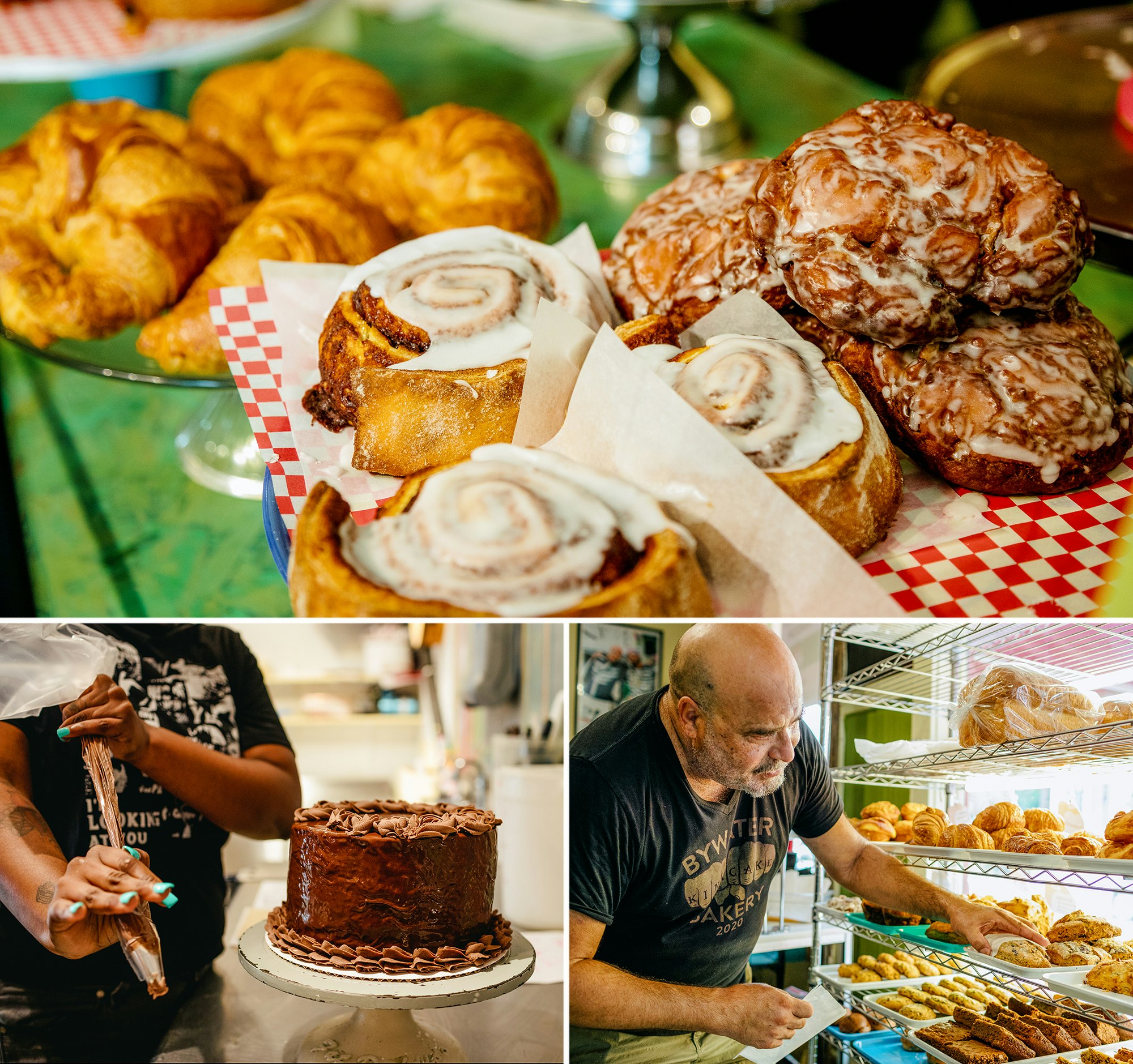
During a recent visit to the bakery, I counted a group of 16 college-aged women in town for spring break. They found the bakery because they were staying at nearby Airbnbs, they told me. The group seemed to be enjoying the bagels they ordered. Osborn came by to drop off a few complimentary pieces of cake and was met with cheers.
“It’s complicated,” he told me after. “I understand what short-term rentals do to the neighborhood, but they also can be important for our business. Locals can’t come in for lunch every day, and there are times of the year when tourists make up 70% of our business. Would they find us if they were staying at a hotel in the business district? I’m not sure.”
Short-term rentals, long-term problems
According to Inside Airbnb, a database and advocacy organization showing how Airbnb impacts residential communities around the world, New Orleans has 5520 short-term rental (STR) listings on Airbnb alone. It’s not only that those units could be going to local tenants. Platforms like Airbnb and Vrbo drive up the price of other rental units, as well.
Swamps, small towns and cajun food: Top 9 day trips from New Orleans
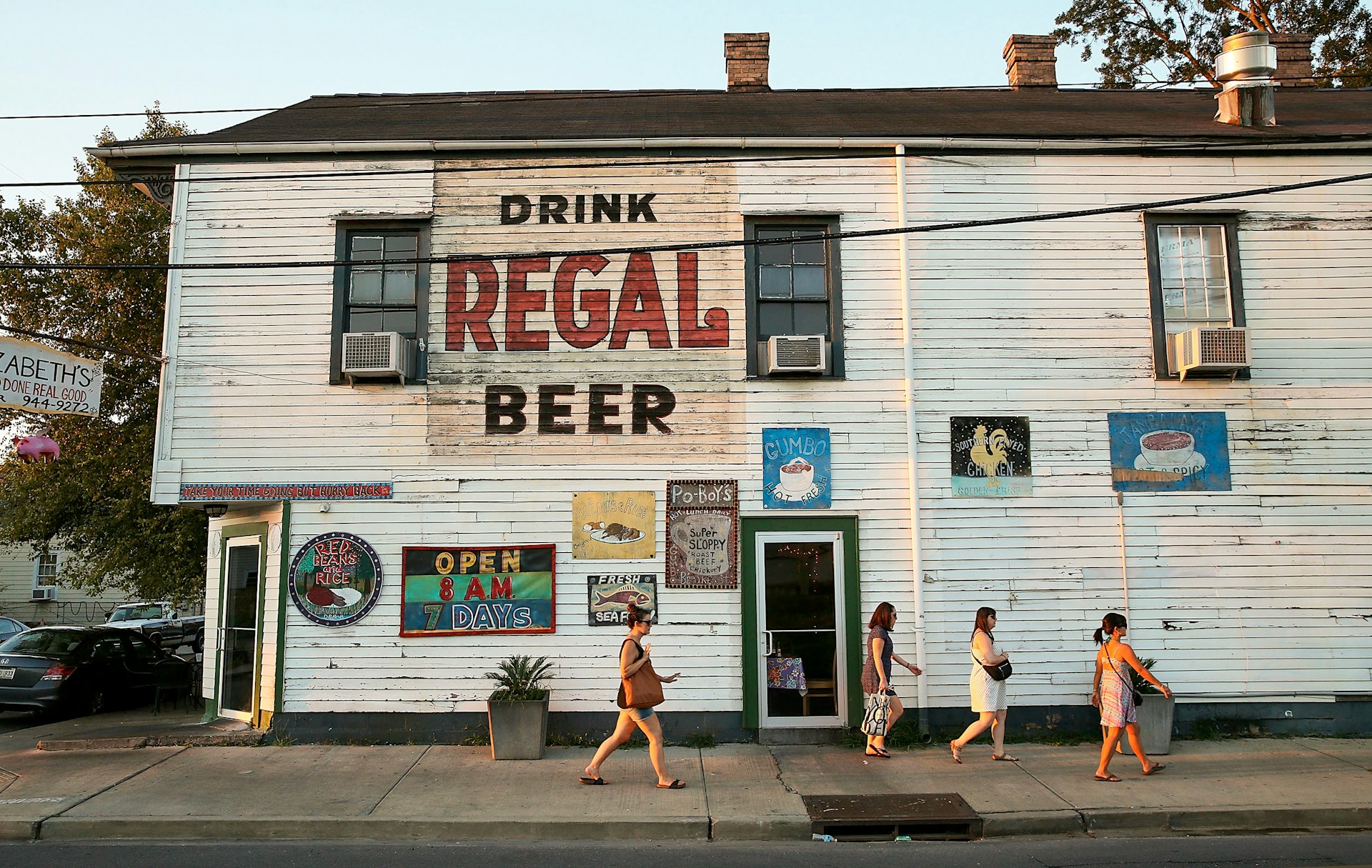
“I know people in the neighborhood who earn $35,000 or $40,000 a year through STRs,” explained Bywater Neighborhood Association president John Guarnieri. “That’s a lot more than they could make with a long-term lease at $1000 or $1200 per month.”Bywater Neighborhood Association president John
A 2018 report by the Jane Place Neighborhood Sustainability Initiative, a community development organization, showed that between 2015 and 2018, rent increased where the concentration of STRs was greatest. Rent for three-bedroom units in the Bywater, for example, increased a whopping 72% during that time.
The problem has only been exacerbated over the last year. Last summer, Hurricane Ida made some rental units unlivable at around the same time COVID-19 renter protections and safety protocols were dropped.
“Airbnb was unfeasible during the pandemic because no one was traveling,” said Ciardullo of the Louisiana Fair Housing Action Center. “Now that tourists are returning, we’re seeing evictions increase as homes are being transitioned back to STRs.”
The effect of all of these forces creates a situation where families cannot find affordable places to live in what experts like Ciardullo call “desirable” neighborhoods. Living near resources such as jobs, schools and grocery stores are all part of that desirability, but in New Orleans, there’s another factor: topography. Neighborhoods like the Bywater are on higher ground protected from New Orleans’ notorious hurricane-season flooding.
The best dive bars in New Orleans
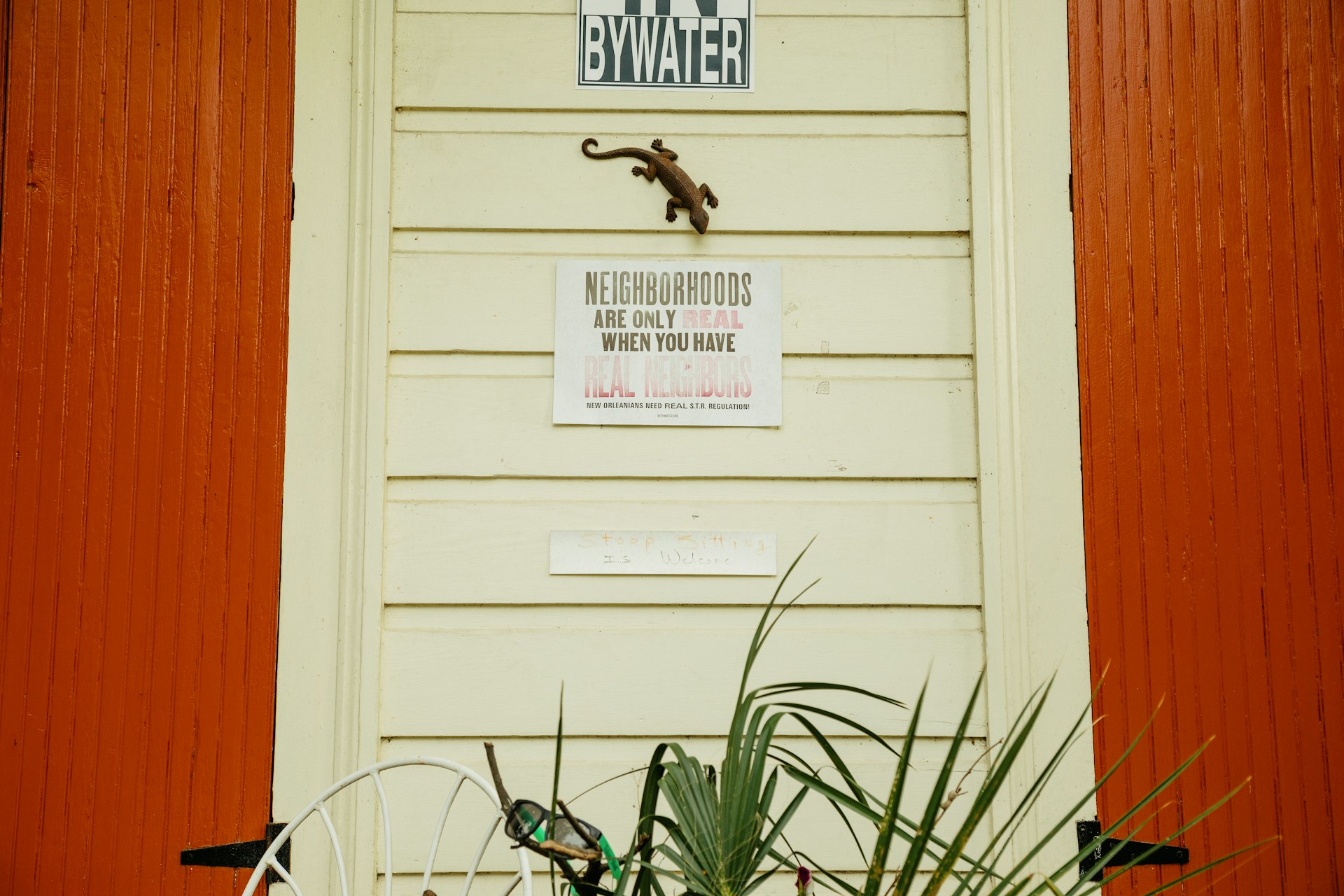
As houses in the Bywater and other high-demand neighborhoods lay vacant in between weekend rentals, Ciardullo estimated 30,000 families in New Orleans are waiting on a Housing Authority of New Orleans (HANO) waitlist for affordable housing.
The Ford family is one of those. Danira and her five children have been waiting on HANO lists since 2009.
As rents continue to rise, Ford and her family keep getting pushed farther and farther from the city center. She recently moved the family into a home out in New Orleans East. It is miles from downtown and well below sea level, but one of the few remaining places where rents are manageable.
“Tourists don’t want to stay in Airbnbs out here, but we don’t want to stay out here either,” Ford said. “It’s just the only place we can afford. It feels like low-income people are being pushed out of sight.”
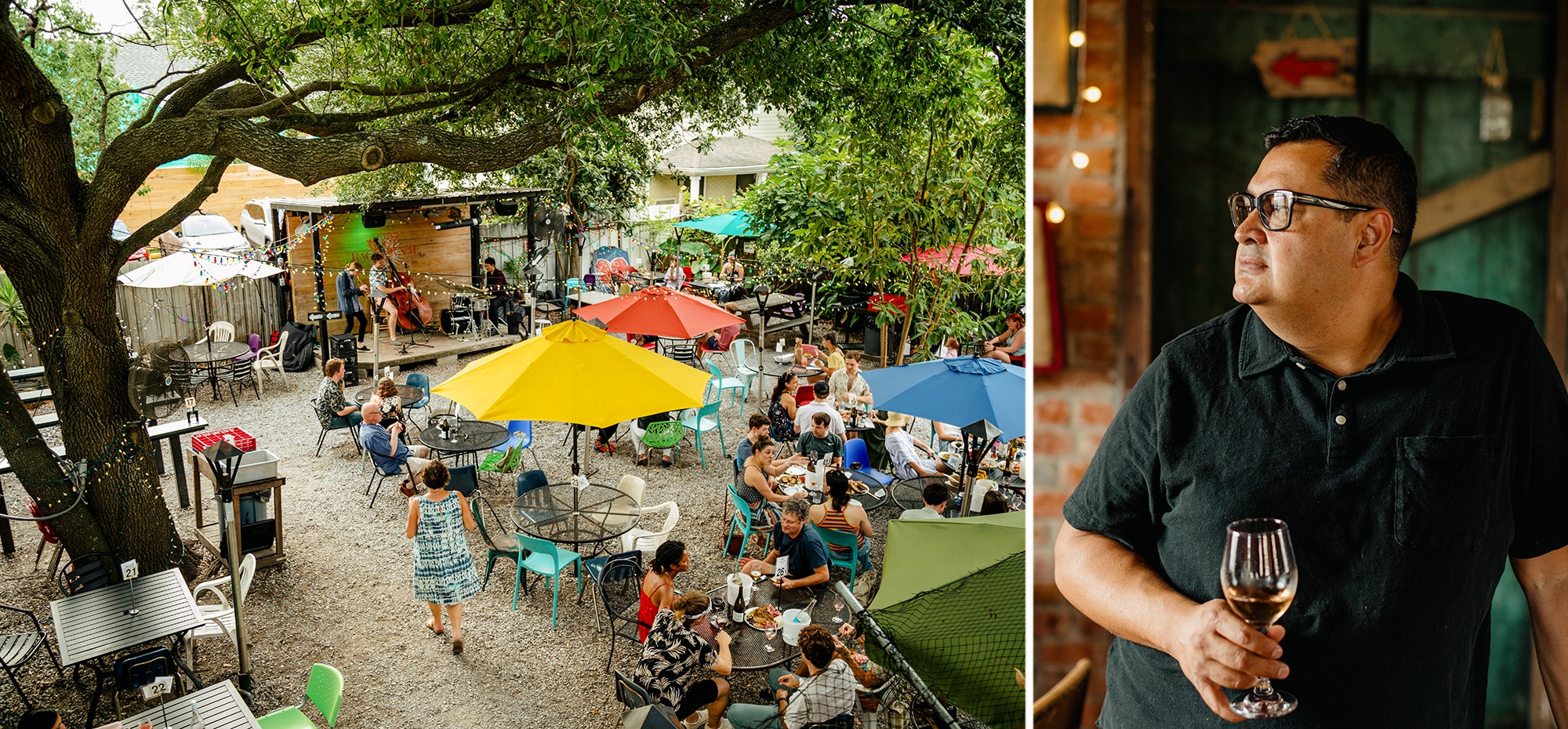
Neighborhood institutions
Unfortunately, many of the features that make a neighborhood desirable to residents also make it more expensive to live in. Bacchanal, for example, is the kind of Bywater institution most anyone would be happy to reside near. Celebrating its 20th anniversary, it’s a lively destination in an otherwise quiet corner in the shadow of where a crumbling former naval base meets the Mississippi River. Two decades ago, it was the last place you’d expect to find a wine and cheese shop. Behind the base is a stretch of greenspace locals call “The End of the World” for its location on the edge of the Industrial Canal and the country’s most famous river.
And this corner of the neighborhood feels like you’re at the edge, not just of a city but also of an era. Outside Bacchanal’s brick walls and wooden courtyard fences, visitors are surrounded by shotgun home after shotgun home, only interrupted by the occasional neighborhood bar with locals sitting outside under slumping overhangs sipping on beers and dragging on cigarettes. From Bacchanal, you can hear the lazy engines of cars rounding the street’s corner, the sound of freight trains roaring by and the occasional honk of a horn from the canal signaling to motorists a bridge is about to lift to allow a ship to pass.
There are times when I’ve gotten stuck by both a passing train and a passing ship. Rather than wait for 45 minutes, I’ll often choose to grab a drink at Bacchanal instead.
“There’s plenty that feels stuck in time down here, but we’ve also seen a lot of change in 20 years,” said manager-partner Joaquin Rodas. “We really feel like a part of the neighborhood. We’ve grown up with it over these decades.”
A huge selection of wine and choose-your-own-adventure cheese plates are what Bacchanal is best known for, but the crown jewel is the shop’s intimate courtyard. For years, it has been the perfect spot for residents of the Bywater and beyond to stop in, sip wine, eat a snack, chat with neighbors and listen to two musical acts per day on the backyard stage.
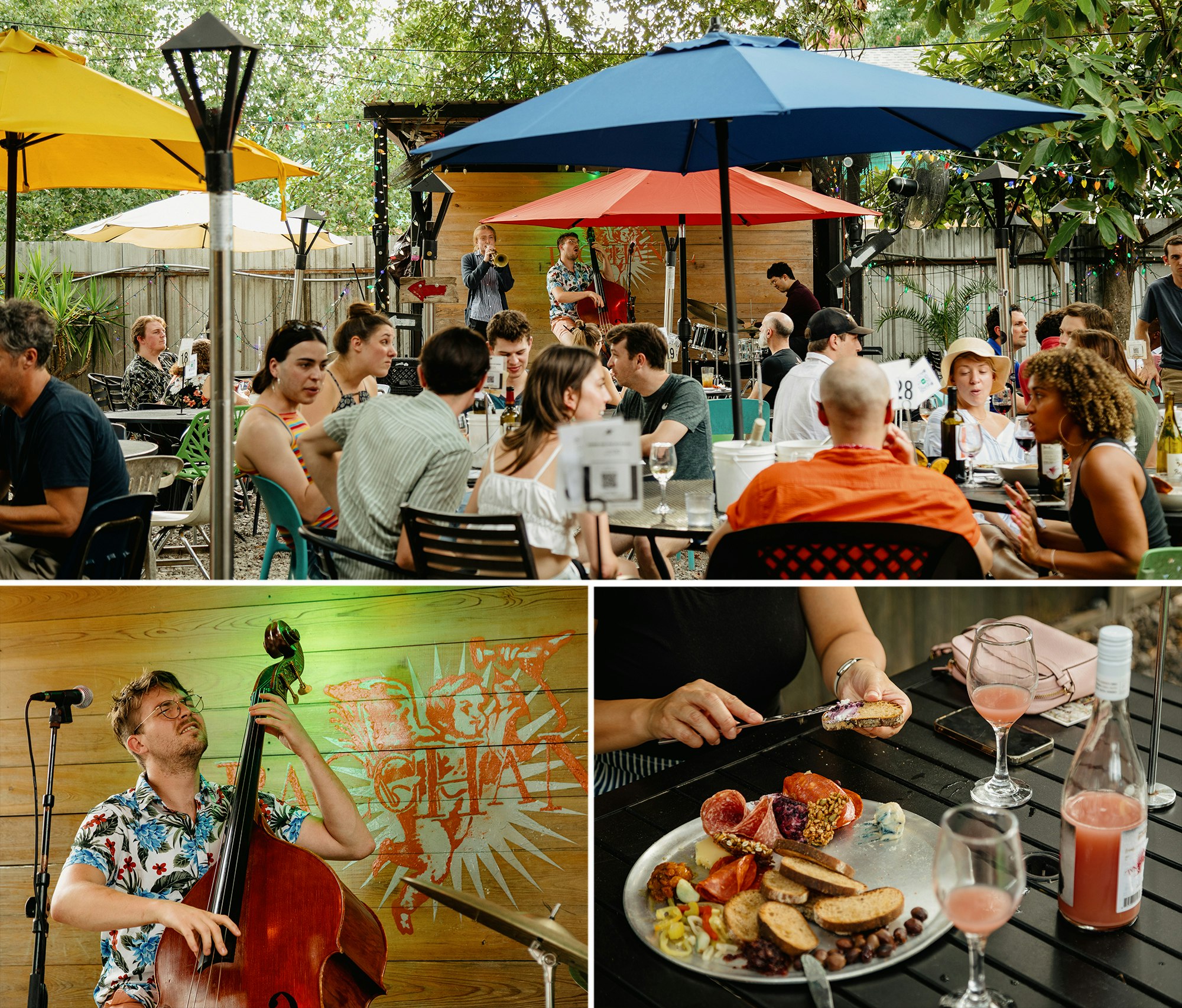
Monday nights at Bacchanal are still some of my favorite early New Orleans memories. I’d spend hours there with friends, or maybe hoping to impress on a first date, chatting under tree-strung lights. I still tell visitors that if they only had time to go to one place, Bacchanal should be that place.
Even back then, finding a table wasn’t easy. On the weekends, you’d often encounter long lines to get in. In recent years, it’s gotten even more difficult. Rodas said tourists are discovering Bacchanal in increasing numbers thanks to social media and word of mouth, making it more difficult for locals to get in.
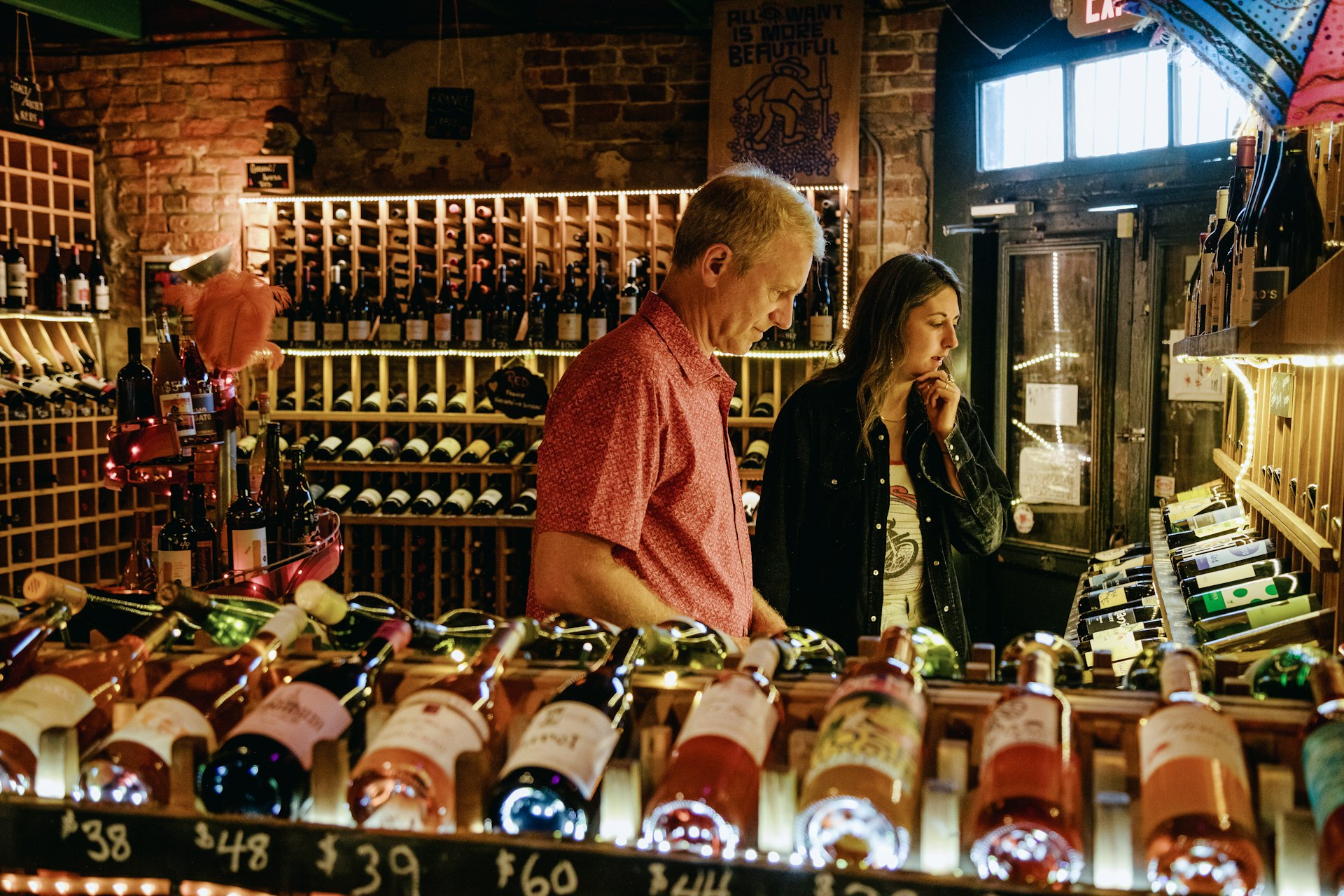
“I’ve seen descriptions of short-term rental listings where people mention the house is close to Bacchanal, so we’re actually drawing tourists to the area,” Rodas said. “On one hand it’s flattering and we love all our guests who come visit. On the other hand, it’s like, are we part of the problem?”
No such thing as a quick fix
Are places like Bacchanal the problem? What about me, a Northerner who moved down here, snatched up a home on the cheap and now makes some money by renting part of it out to long-term tenants? Am I the problem?
The entire problem? Unlikely. Part of the problem? I’m not sure. Certainly my actions have added to gentrifying the neighborhood, just as Bacchanal has. At the same time, neighborhoods need people to live in them. Local tenants need places to rent. They need places to eat, drink, relax and enjoy. Are we helping or hurting? It’s complicated, because the answer is so often “both.”
The effects of tourism on gentrification are complex, too. Of course, no one resident, business or tourist, is fully responsible for such multifaceted issues. These are difficult problems that some local governments are thankfully beginning to address. In Venice, for example, to prevent overcrowding, tourists are required to pre-book their vacation online and to pay a fee to enter the city, all while a high-tech surveillance system is tracking general tourist movements and congestion patterns. Last year, Barcelona became the first city in Europe to ban short-term private room rentals. Closer to home, Nashville has increased the fees associated with registering an Airbnb while also using technology to improve enforcement when STR owners break the rules.
How can we make travel more ethical in the post-Covid world?
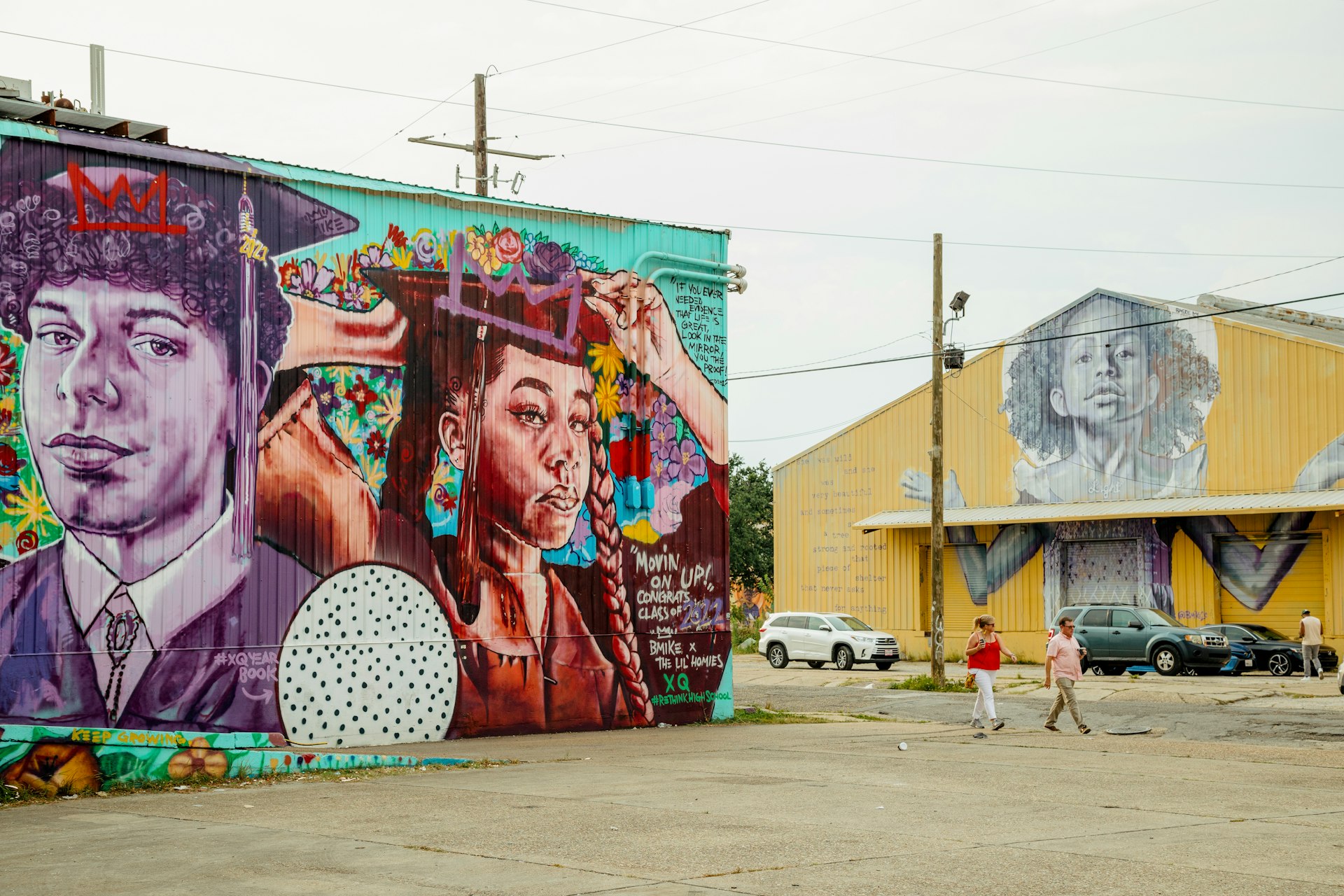
In New Orleans, the City Council has passed laws to manage the problem, as well. These include limits on how much of each property can be used for STRs and restrictions on the number of guests allowed per unit. There is also a requirement that fees from each booking contribute to a fund to support local affordable housing. It’s a good start, but enforcement is severely lacking.
“We like having tourists here and sharing our culture. Just be respectful,” Osborn of Bywater Bakery said. “Don’t stay up all night at your Airbnb partying when you’re in the middle of a neighborhood. Don’t jump in front of a Mardi Gras Indian to take a picture of their beautiful, colorful suit. Let the culture wash over you rather than making it about you, you know?”
But the need for respect extends beyond how you act as a visitor in a new neighborhood – choosing where you stay can be one of the most consequential decisions you make.
Best things to do in New Orleans
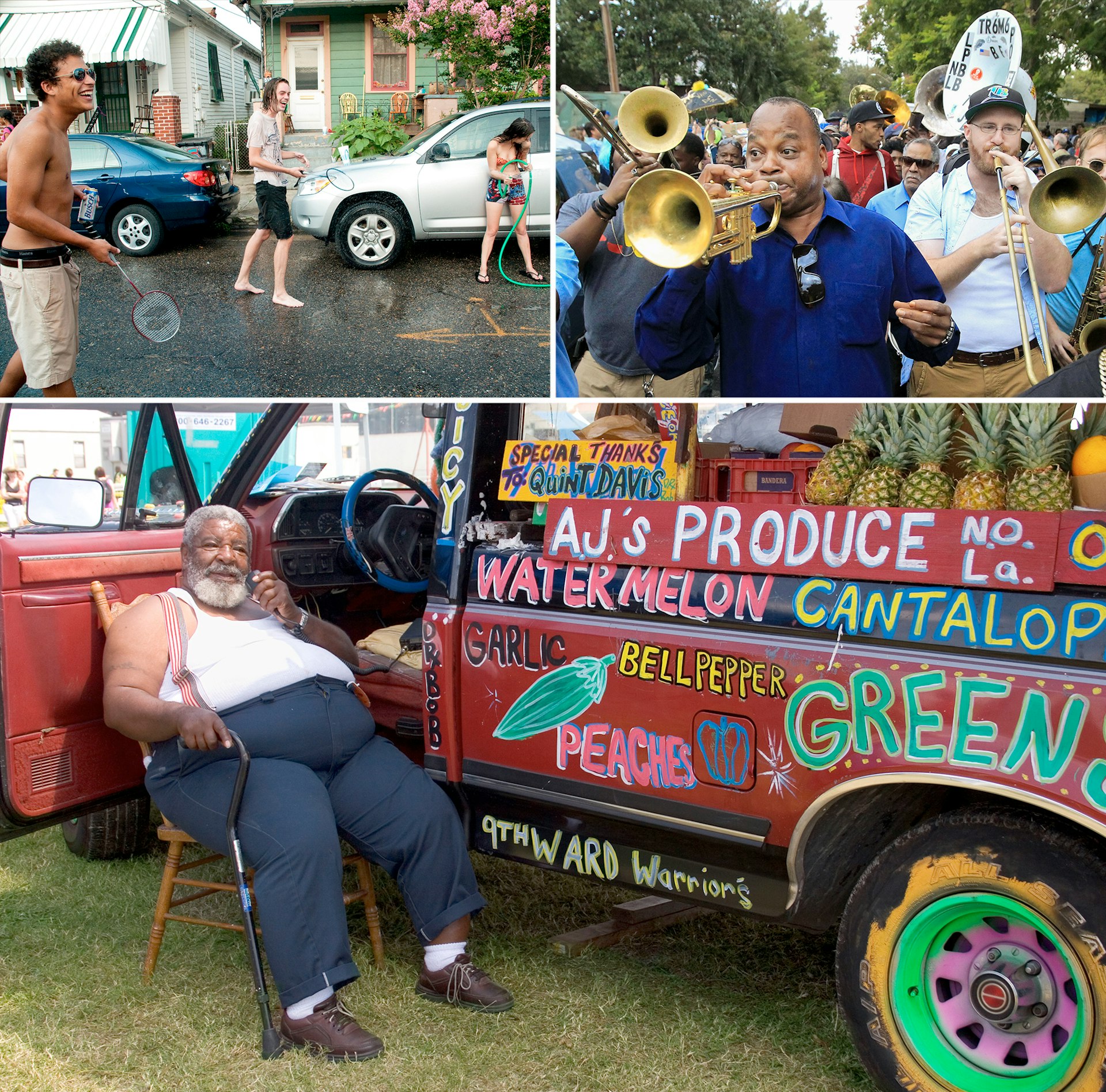
“It’s difficult because we want to experience real neighborhoods when we travel,” said Guarnieri of the Bywater Neighborhood Association. “But it does affect those neighborhoods.”
So, should we write off Airbnb completely? Many experts would say forgoing short-term rentals for more traditional hotel accomodations is a good place to start. But so is thinking beyond the desire to stay in whatever neighborhood is currently considered “hip.” For example, affordable housing advocates emphasize that we don’t need our sleeping accommodations to be in a certain neighborhood in order to enjoy what that neighborhood has to offer.
“You can sleep in parts of town at night that are more traditionally built for tourism such as the Central Business District, while still visiting all the neighborhoods, restaurants and shops run by locals that you would like,” said Ciardullo. “Those businesses will benefit from your spending, and you won’t displace residents by using STRs in historically working class neighborhoods.”
Ciardullo also recommends paying attention to issues of affordable housing in your own communities and applying those learnings when you travel. Make yourself aware of what fair market rent is in neighborhoods you’re visiting so that you don’t overpay and inadvertently drive up rent for locals.
The Lonely Planet guide to Mardi Gras
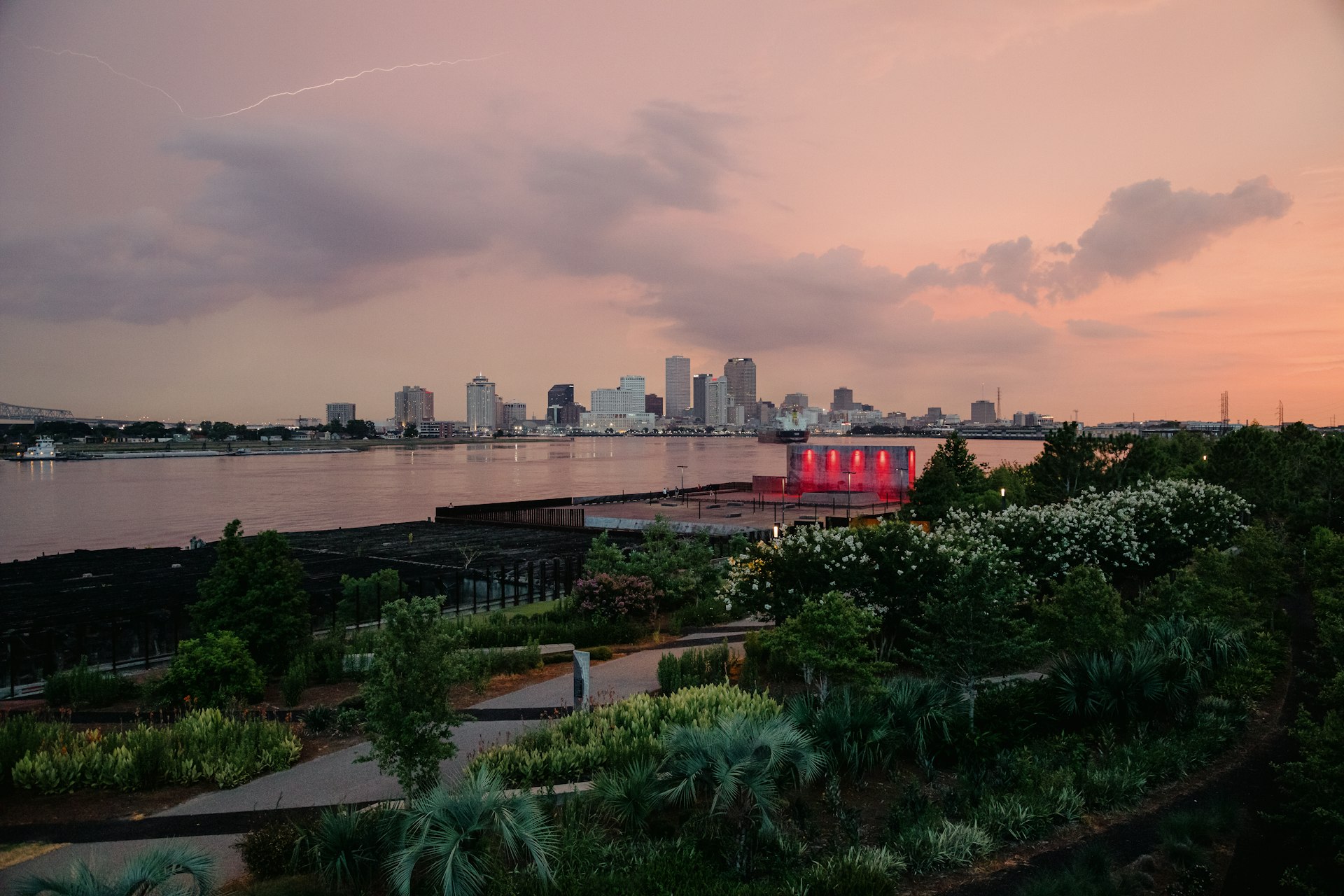
None of us want to hurt locals while we’re trying to “live like a local.” However, Danira Ford’s family, and tens of thousands of others like hers in New Orleans, remind us that our vacation can change a neighborhood and that change can have profound effects on others.
“I want to imagine people would make a different decision if they understood the impact it was having on our lives,” Ford said.

